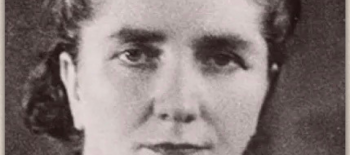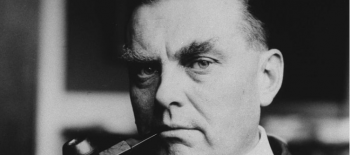2000-2021
Polish Cultural Institute New York
60 E 42nd St Ste 3000
New York, NY 10165
Looking back at the last 20+1 years of our work, we celebrate our 21st anniversary with you by sharing selected projects done in the past 21 years. Explore more current and recent Music Projects.
Explore further highlights of the 20+1 years of our work:
→ Music
→ Humanities
→ Visual Arts & Design
→ Film & Performing Arts
→ Polish-Jewish Programming
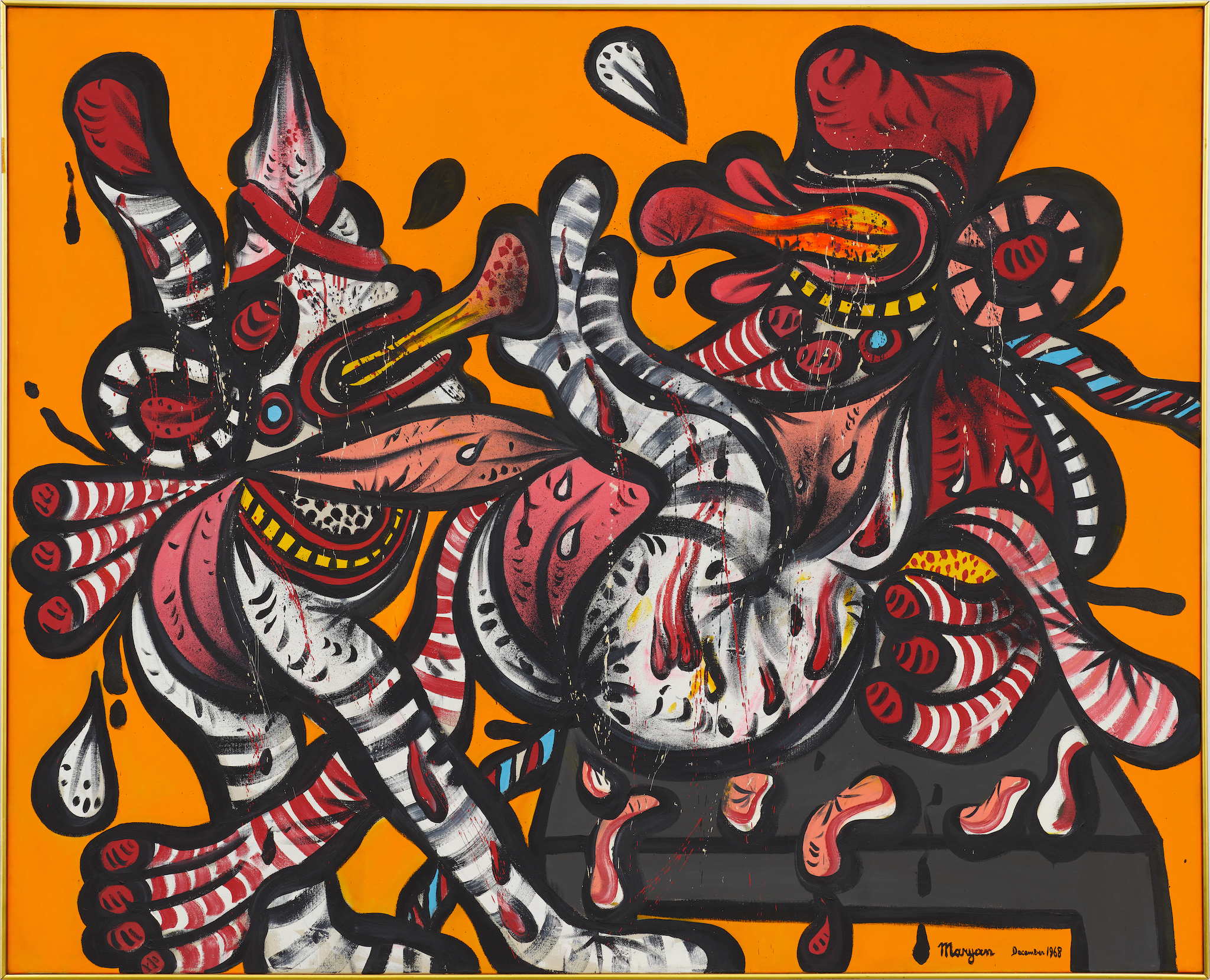
My name is Maryan (2021-2022)
We supported a major retrospective of works by Pinkas Bursztyn “Maryan” that opened in 2021 at The Museum of Contemporary Art North Miami. It is a monographic presentation of the artist’s four decades of paintings, sculptures, drawings and film. Drawing upon new scholarship and a trove of never-before-exhibited works from the artist’s estate, My Name is Maryan is the first retrospective to holistically examine all periods of Maryan’s life and work. Throughout the museum, Maryan’s extraordinary biography and prolific oeuvre represent a deeply moving monument to the perseverance of the human spirit and power of art to work through traumatic loss. Credited as being among the first artist-eyewitnesses to directly depict their experiences of the Shoah, Maryan’s unique approach to figurative art strove to solidarity across cultures and generations.
“With new scholarship by the curator Alison Gingeras, who organized the exhibition, and a trove of works never before on public view, the show traces Maryan’s wildly expressive form of figuration, reinserts the work into a larger art historical context and connects it to universal human experience.”—Hilarie M. Sheets, New York Times
Selected Press:
The New York Times: An Artist Once Reborn Is Now Rediscovered
TimeOut Miami: “My Name Is Maryan” at MOCA
The Art Newspaper: MOCA North Miami hosts huge retrospective for Auschwitz survivor forgotten by art history
Forward: The most powerful Jewish artist you’ve never heard of
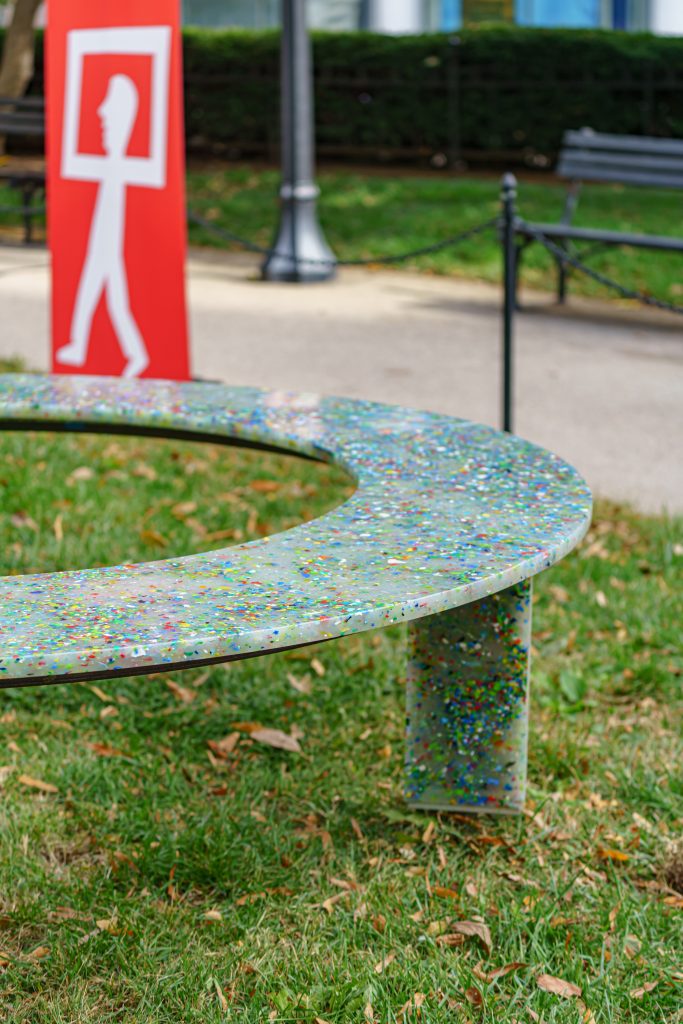
Circula for ECO Solidarity (2021-2022)
Circula by Tomek Rygalik is one of the leading projects of ECO Solidarity. The ECO Solidarity mission is to address the imperative need for human-centered design in response to climate emergency, humanitarian and public health crises, through design with empathy, sustainable materials, having the public wellbeing in public spaces in mind, and embracing the key objectives of the Green New Deal. Facing the environmental challenges of today, bold new ideas are needed more than ever to foster positive social change that advances ecology, sustainability, and wellbeing. It is with this urgency in mind that the Golden Triangle Business Improvement District (BID) together with the Polish Cultural Institute New York) and the Embassy of the Republic of Poland announce the opening of Circula by a renown Polish designer, Tomek Rygalik at Studio Rygalik. This site-specific design installation was created in response to the ECO Solidarity movement, to stimulate solidarity through sustainable design that reduces social isolation and strengthens societal bonds.
Selected Press:
DesignMilk: Tomek Rygalik Shares the Circula Bench Designed for Social Interaction

Erna Rosenstein (2021)
In 2021, Hauser & Wirth in partnership with the Foksal Gallery Foundation, and with support from the Polish Cultural Institute New York, presented Erna Rosenstein: Once Upon a Time curate by Alison M. Gingeras, a solo exhibition of works by Erna Rosenstein. “The late Surrealist artist Erna Rosenstein (1913-2004) was a pivotal figure of the Polish avant-garde but remains little-known outside of Eastern Europe. The first monographic exhibition devoted to her work in the US presents more than 40 paintings, drawings, sculptures and writings that oscillate between magic realism and more pragmatic themes, from ethereal landscapes to poignant works that reflect on the Holocaust, during which she witnessed the murder of her own parents by the German army. Although none of Rosenstein’s pre-war works survive, the traumas she endured in that era would haunt her work for a lifetime. It is referenced in several evocative pieces in the exhibition, including Świt (Portret Ojca) (Dawn) (Portrait of the Artist’s Father) (1979), which shows her father’s head hauntingly decapitated from his body. Even vibrant, sinuous paintings like Poświata (Afterglow) (1968) seem to imply something sinister lurking beneath a fragile surface.”—The Art Newspaper. A pre-recorded reading of Erna Rosenstein’s poetry is available on the Hauser & Wirth’s website.
“Especially impressive is the museum-caliber show introducing the multifaceted Polish artist Erna Rosenstein (1913-2004), organized by the intrepid Alison M. Gingeras at Hauser & Wirth (through Dec. 23)”—Holland Cotter and Roberta Smith The New York Times
Selected Press:
The New York Times: Best Art Exhibitions of 2021
Frieze: Erna Rosenstein’s Dreamlike Forms Resist Interpretation
Art & Object: Once Upon a Time…
The Art Newspaper: Three exhibitions to see in New York this weekend
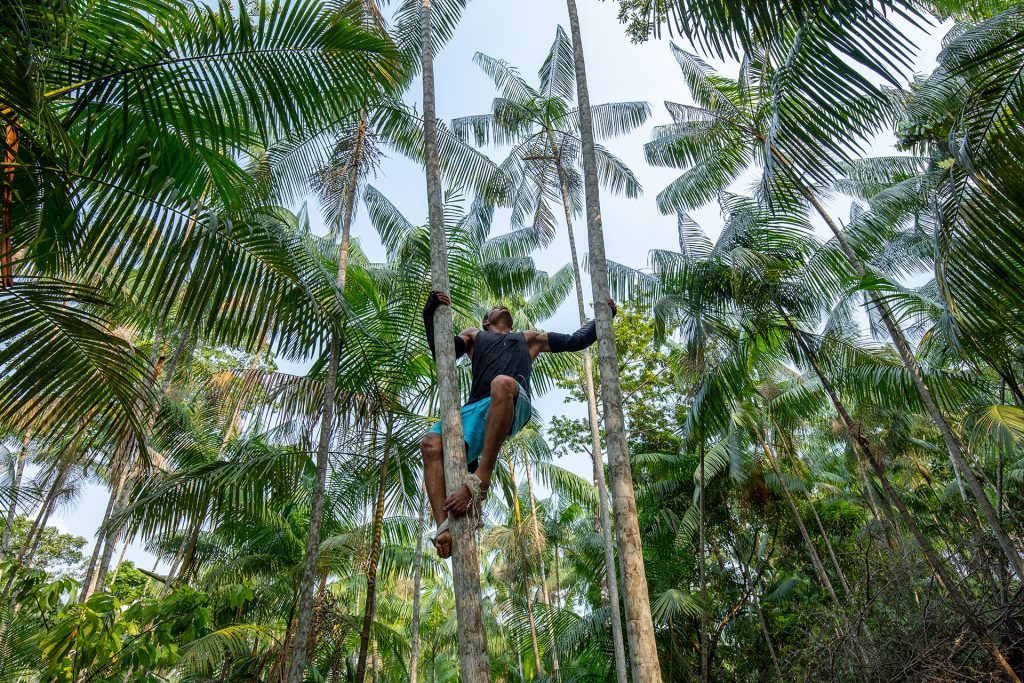
Black Gold (2021)
In 2021 at the Austin Design Week, in partnership with The Spirit of Poland we presented an exhibition „Black Gold”, a case study of a project carried out in the Amazon rainforest. Polish designers joined forces with the local community of acai berry pickers in Brazil to create a system of infrastructure and devices for improving the safety of the traditional collection method of the fruit, which grows at great heights on quite fragile palm trees, as well as for improvement of the Amazon forests from damage during this process. Acai berries are conquering new markets, with the US, EU and Asia being the leading importers of this Amazonian „black gold”.
Selected Press:
Monitor Mercantil: Projeto de design une Brasil e Polônia em prol de coletores de açaí
Conexão Planeta: Equipamento criado por designers para dar mais segurança a coletores de açaí ganha destaque em evento internacional
Jornal Digital Norminha: Projeto de design une Brasil e Polônia em prol de coletores de açaí
Katia Velo: Projeto de design une Brasil e Polônia em prol de coletores de açaí
Pará Terra Boa: Desenhistas criam ‘kit peconheiro’ para evitar acidentes em açaizais
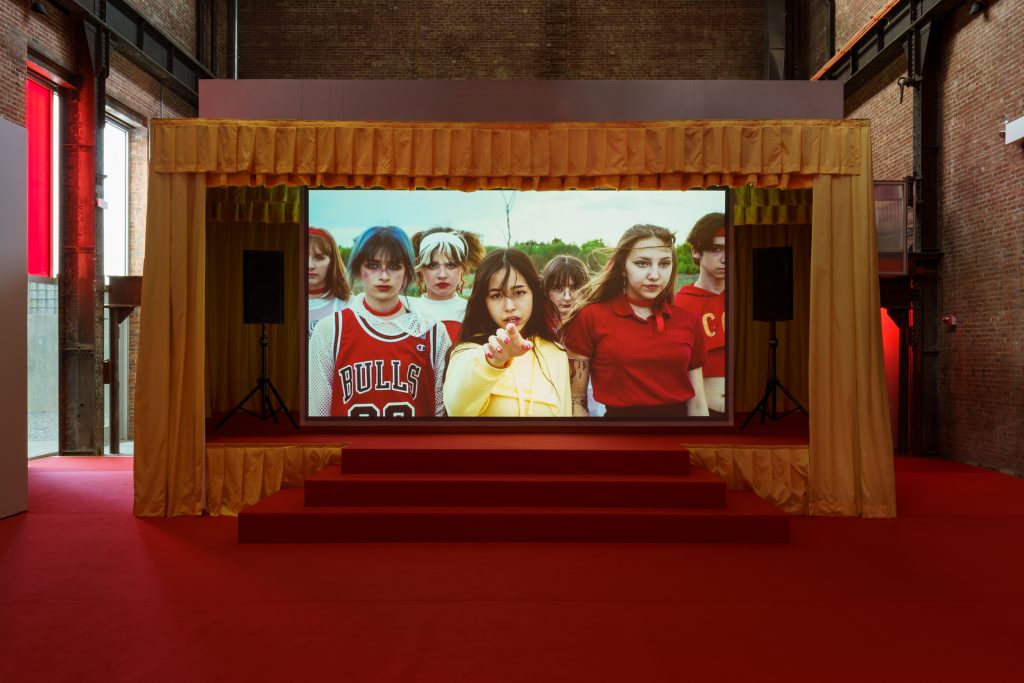
Diane Severin Nguyen (2021)
In 2021, SculptureCenter, supported by the Polish Cultural Institute New York, presented the first solo institutional exhibition of artist Diane Severin Nguyen: IF REVOLUTION IS A SICKNESS featuring a newly commissioned video work. The exhibition is built around the new moving image work, co-commissioned by SculptureCenter and the Renaissance Society at the University of Chicago and filmed in 2021. Set in Warsaw, Poland, the film loosely follows the character of an orphaned Vietnamese child who grows up to be absorbed into a South Korean pop-inspired dance group. Widely popular within a Polish youth subculture, K-pop is used by the artist as a vernacular material to trace a relationship between Eastern Europe and Asia with roots in Cold War allegiances. For the project, Nguyen assembled a crew of teenaged Polish dancers who perform original choreography set to music and lyrics co-written by the artist. By arranging these trained bodies, who are invited to “lose themselves to the new image,” as Nguyen’s lyrics suggest, the artist looks at both the exaltation and erasure of personal traumas at play in the process of representation, identity building, and the formation of a shared nation space. The exhibition was curated by Sohrab Mohebbi, Curator-at-Large, and co-organized with the Renaissance Society at the University of Chicago, where it will be on view in spring 2022. The Chicago presentation is curated by Myriam Ben Salah, Director and Chief Curator. A publication – the artist’s first – will accompany the exhibition.
“The exhibition’s main work, a video titled “If Revolution Is a Sickness,” stars a Vietnamese-Polish protagonist named Weronika, who lives in Warsaw and eventually joins a local dance crew inspired by Korean idol groups. As they move and lip-sync to a song about revolution, Nguyen builds a case that K-pop has much in common with Soviet socialism. Which maybe isn’t far-fetched: The genre’s stars often live communally and perform choreographed acts. Casting her lead actress by searching for a Polish performer who shared her surname, Nguyen sought a doppelgänger from an alternate post-Cold War world. If your immigrant parents came inches away from moving elsewhere entirely, this game of “what-if” feels familiar.”—The New York Times
Selected Press:
The New York Times: Art We Saw This Fall
Brooklyn Rail: Diane Severin Nguyen: If Revolution Is a Sickness
WWD: Artist Diane Severin Nguyen Found Inspiration in K-pop and Poland
Art in America: REVOLUTION, RESTAGED AND TRANSLATED: DIANE SEVERIN NGUYEN
Artnet News: With Homemade Napalm and K-pop Anthems, Photographer-Filmmaker Diane Severin Nguyen Is Forging a New Genre of Image
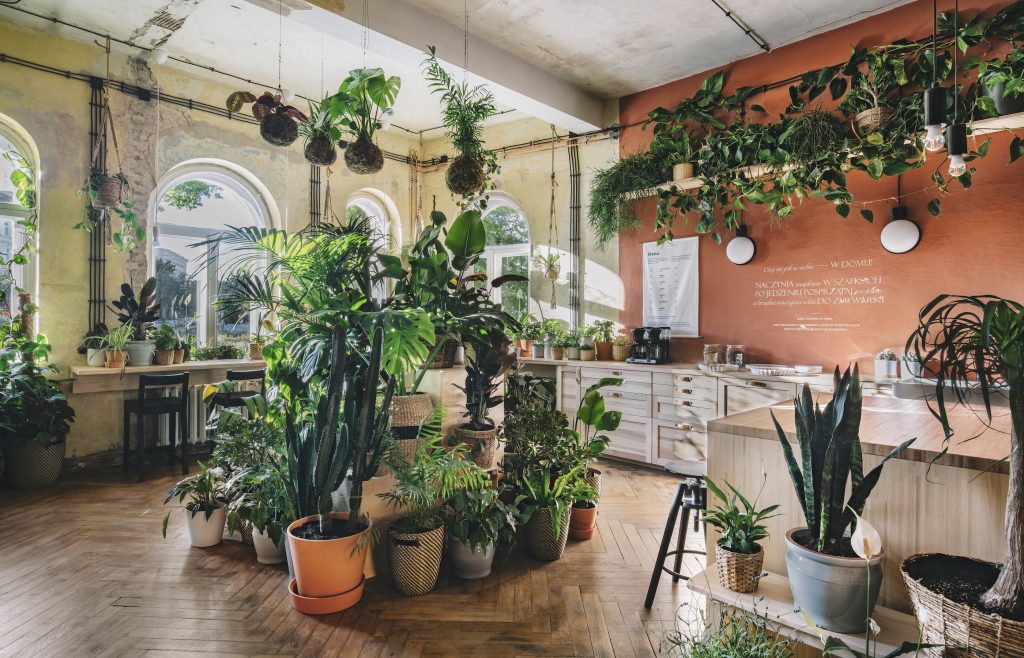
Paulina Grabowska for ECO Solidarity (2021)
ECO Solidarity brings to attention sustainable contemporary design solutions and places special importance on bringing unity to the fractured social fabric. Paulina Grabowska NASDRA has been selected as a Polish designer to participate in ECO Solidarity at ICFF + WantedDesign Manhattan 2021. She investigates the possibilities of the circular urban farming methods, where functional foods are grown. Her main objectives are to use the least resources; re-use all of the byproducts of the process; cultivation of organic foods that have an impact on our mood, cognition, and health. The company NASDRA has a mission to promote and facilitate implementation of circular economy principles in business and design strategies in Poland. Paulina focuses her work on changing mindsets and at the same time providing strategic tools helping to implement those new models.
To create a timely, forward-thinking project of the scale of ECO Solidarity, in 2021 eight EUNIC institutions tapped some of the most innovative emerging and established designers and leading field experts from their countries. The partnering organizations and their nominees include: Austrian Cultural Forum New York in cooperation with Austrian Federal Economic Chamber and Vienna Business Agency (Lotte Kristoferitsch, EOOS NEXT); Delegation of the Government of Flanders to the USA (Sep Verboom, Livable); Wallonie-Bruxelles International New York (Theresa Bastek and Archibald Godts, Studio Plastique); The Czech Center (Eduard Herrmann and Matěj Coufal, Herrmann & Coufal); Goethe-Institut New York, (Renana Krebs, Algaeing); Arts Council Malta in New York, (Anna Horvath, AHA Objects); Polish Cultural Institute New York, (Paulina Grabowska, NAS-DRA Conscious Design; and Romanian Cultural Institute (George Marinescu and Maria Daria Oancea, Atelier Ad Hoc).
Image:
Paulina Grabowska of NAS-DRA Conscious Design was invited to the IKEA Home of Tomorrow to design interior landscaping, urban farms and circular solutions. Photo by Kroniki Studio.
CONCEPT DESIGN:
Marta Samsonov
Mateusz Książek
Gustaw Jakubowski
Katarzyna Grzeszczak
Ewelina Sośniak
SPATIAL DESIGN:
Justyna Beata Puchalska
Jo Jurga
Paulina Grabowska
““Up to 80% of environmental impacts are determined at the design phase,” declares Tomek Rygalik, a Warsaw, Poland-based designer and professor. Rygalik is also the co-founder of ECO Solidarity, a sustainable design initiative that will be presented on May 18 at WantedDesign Manhattan and the International Contemporary Furniture Fair’s (ICFF) virtual trade event, CLOSEUP. Simply put, product specification and space planning decisions made by architects, interior designers and builders long before a single foundation is laid can have lasting effects on the health of their buildings and occupants. There are numerous areas of convergence between wellness design and sustainability.“—Jamie Gold, Forbes
Selected Press:
Forbes: Industry Experts Define Sustainability And Wellness Design For Earth Day’s 51st Anniversary
Design Milk: ECO Solidarity Unites 8 Designers + 8 Institutions to Address Climate Change Through Sustainable Design
Design Milk: Behind the Scenes at CLOSEUP With ICFF + WantedDesign Manhattan
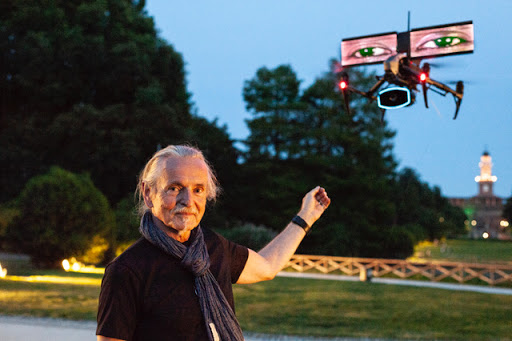
USTEDES (2020)
In 2020 we proudly supported a new site-specific and community-engaged project by acclaimed artist Krzysztof Wodiczko in collaboration with More Art and its founder and director Micaela Martegani. “Amplifying the voices of migrants and political refugees in the United States, the project uses drones to examine America’s immigration injustices ahead of the 2020 election”—More Art 2020. Having its initial iteration in Milan in the summer of 2019 titled Loro (Them), in 2020 the artist introduced Ustedes (Them), the second in a series of live performances that use drones and innovative new technologies to amplify the perspectives of migrants, political refugees, and marginalized citizens to explore the complexities of their lives in today’s globalized society. The production co-opts drone technology, often employed by governments for border surveillance operations, as a medium to broadcast the voices and perspectives of immigrants and refugees.
“The New York version of the project aimed to tell the stories of the immigrants from South and Central America, both documented and undocumented. We have been working closely with Make the Road New York, a progressive, grassroots, immigrant-led organization that empowers immigrant and working-class communities to achieve dignity and justice through legal services, education initiatives, community organizing, and policy innovation. After meeting with dozens of immigrants over many months and hearing about their personal experiences, we felt the story that needed to be told most urgently is the one that is least discussed: labor issues and workplace discrimination.”—Micaela Martegani, Artnet News
Selected Press:
Artnet News: Artists Are Finding Inspiring Ways to Adapt Their Work to a World in Crisis. Arts Organizations Must Do the Same
Artnet News: Editors’ Picks: 14 Events for Your Art Calendar This Week, From a Conference With Bay Area Museum Directors to a Very Contemporary Look at Henry VIII
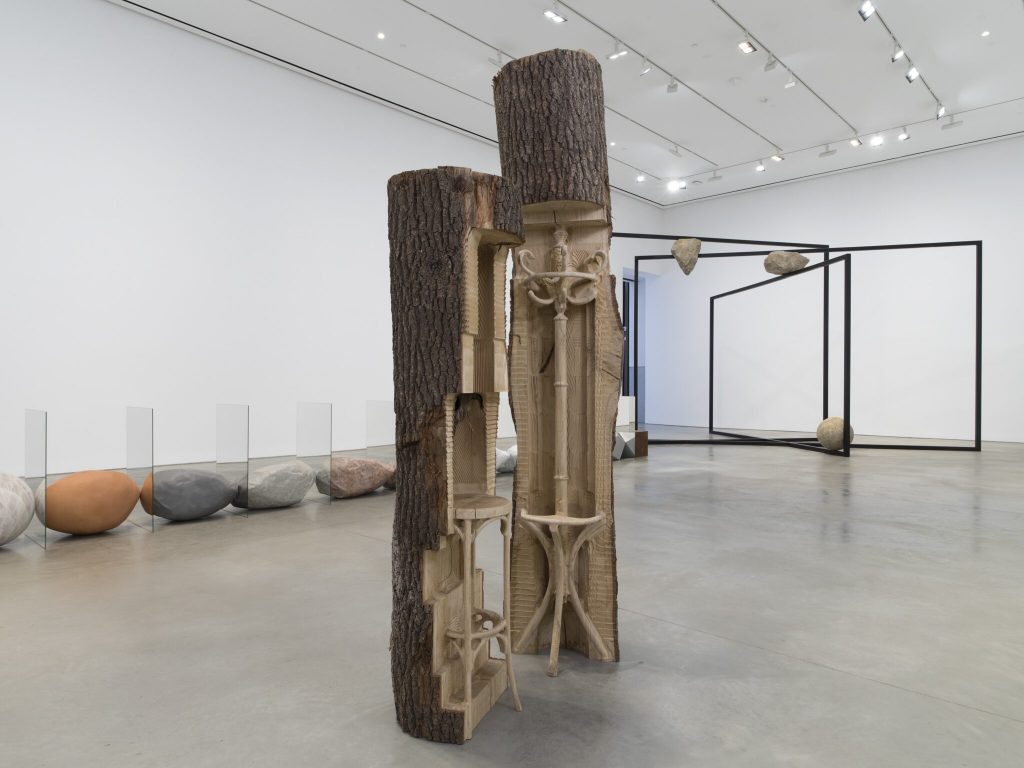
MIT List: Alicja Kwade (2019)
Two sister solo exhibitions of works by Alicja Kwade were presented in Dallas, TX, and Boston, MA, in 2019. Working primarily in sculpture and installation, Alicja Kwade explores structures of reality and perception of time and space, as well as systems of value, that determine how we perceive the world and decide what constitutes the real. She is best known for her sculptural works which use common, yet symbolically resonant, materials like rocks, lamps, and clocks. Typically working in a site-specific mode, viewers encounter these and other found objects transformed by Kwade to mysterious effect. Kwade’s alchemical treatment of familiar things complicate, and at times cast suspicion on our perceptual faculties. For the two exhibitions at Dallas Contemporary and MIT List Visual Arts Center, Kwade will realize new sculptural commissions displayed alongside a focused selection of other recent work. Alicja Kwade: In Between Glances was organized by Henriette Huldisch, Director of Exhibitions & Curator, MIT List Visual Arts Center, and supported by the Polish Cultural Institute New York. Alicja Kwade: Moving in Glances exhibition in Dallas Contemporary was sponsored by Nancy C. + Richard R. Rogers; Education Sponsor: Neiman Marcus, Media Sponsor: Paper City; Supported by Joule, Roxor Artisan Gin, The Box Co., TACA, Tammy Cotton Hartnett, Carnegie Mellon University, TATUM Art Advisory, 303 Gallery, Conig Galerie, and the Polish Cultural Institute New York.
“[Kwade] activates an object as a material, often denying its primary meaning, to investigate principles found in the discourses of quantum mechanics, physics, and mathematics to create a new type of measurement—a visual theory to be experienced with the body.” –Melissa Bianca Amore, BOMB Magazine
Selected Press:
BOMB Magazine: Mind As Object: Alicja Kwade Interviewed by Melissa Bianca Amore
WBUR: At MIT List, Alicja Kwade’s ‘In Between Glances’ Asks Whether We Can Believe Our Eyes
The Boston Globe: At MIT, Alicja Kwade keeps the cosmic order with algorithms and art
The Dallas Morning News: Motion and physics drive Alicja Kwade’s cerebral works at the Dallas Contemporary
Paper City: Art Party Mania — Major Exhibition Openings Bring the Power Players Out in Dallas
Artnet News: https://news.artnet.com/art-world/fall-museum-preview-1641652
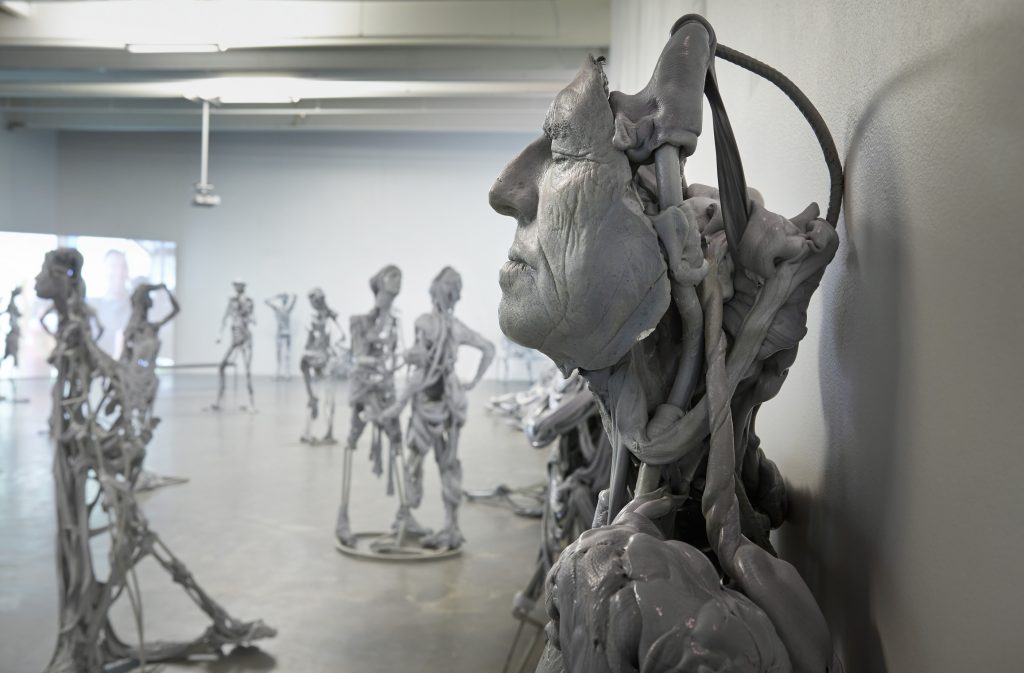
Paweł Althamer: The Neighbors (2014)
In 2014, the New Museum and the Polish Cultural Institute New York presented Pawel Althamer: The Neighbors, an exhibition of New Sculptures by Pawel Althamer. Curated by Massimiliano Gioni and Gary Carrion-Murayari was the third presentation of the artist’s work at the museum. The show featured a number of Althamer’s iconic sculptures and performative videos, works that cumulatively demonstrate how Althamer understands himself and the world around him through a variety of media.
“Mr. Althamer’s devotional, almost religious embrace of ephemerality — faith in it, really — is the element of his art I like best. He seems to keep saying, one way or another, that what counts about art is that people keep doing it, preferably in positive forms, preferably by working together. And whatever emerges from this process — sculptures made of grass, people planning a park, street musicians singing — like the creators themselves, eventually goes away, but is also replaced.”—Holland Cotter, The New York Times
Selected Press:
The New York Times: Global Citizens, Bound by Soul and Sinew

MoMA: Alina Szapocznikow (2012-2013)
Organized in 2012-2013 at MoMA, featuring over 100 pieces of sculpture, drawing, and photography, the exhibition drawn on loans from private and public collections including major institutions in Poland. First presented in 2011 at the WIELS Contemporary Art Centre in Brussels and subsequently at the Hammer Museum in Los Angeles and the Wexner Center for the Arts in Columbus, Ohio, the show was on view for four months at The Museum of Modern Art in New York. It was accompanied by a major publication, co-published by The Museum of Modern Art and Mercatorfonds, reflecting new scholarship on Szapocznikow, contextualizing this work for a broader audience.
“By the mid-’60s, however, her art took a post-Surrealist, proto-feminist turn. It had Pop credibility, too, thanks to industrial materials like polyurethane and polyester resin. In “Goldfinger,” made a year after the Bond film of the same title, female legs cast in gold-patinated cement pinwheel around an automotive shock absorber.”—Karen Rosenberg, The New York Times
Selected Press:
The New York Times: Body and Soul, From the Surrealistic to the Fetishistic
Gazeta Wyborcza: Wielki powrót Szapocznikow
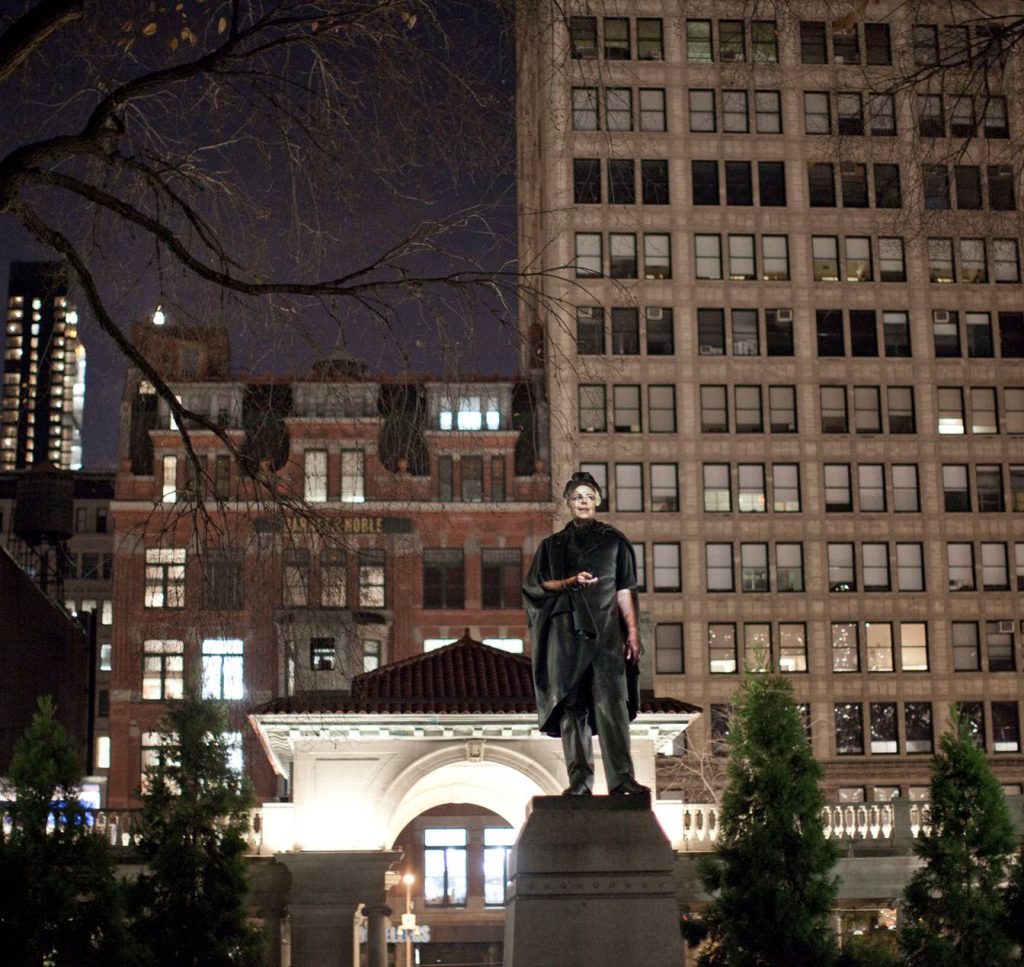
Union Square: Krzysztof Wodiczko at: Abraham Lincoln (2012)
“Most recently an 1870 statue of Abraham Lincoln at the northern end of Union Square Park came to life… through the faces and voices of fourteen recent war veterans who served in Afghanistan and Iraq. The 2012 reanimated monument was the work of artist Krzysztof Wodiczko.”—Gregory Sholette. This project is a continuation of Wodiczko’s exploration of the experience of veterans. Since 2008, using similar techniques, Wodiczko created several installations, for example the The Veterans Project (2010) at the ICA in Boston, also in collaboration with the Polish Cultural Institute New York.
Selected Press:
Hyperallergic: Reimagining Monuments to Make Them Resonate Locally and Personally
Brooklyn Rail: KRZYSZTOF WODICZKO with Ann McCoy
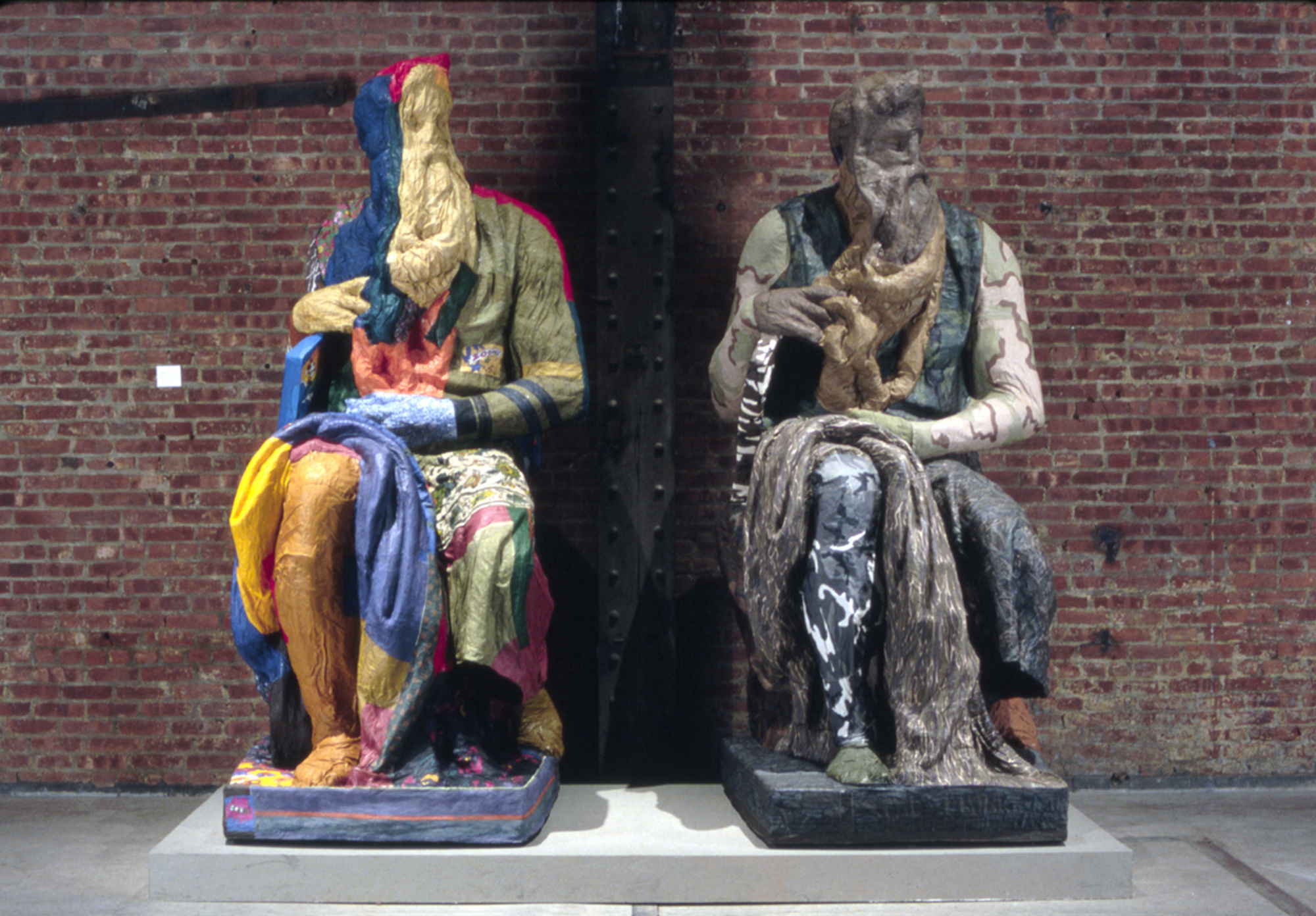
SculptureCenter: Architectures of Gender (2003)
Organized in 2003, Architectures of Gender, organized by the SculptureCenter, featured numerous separate spaces utilized by the artists for site-specific installations of diverse aesthetics and with a variety of points of view. Their positions range from more political stances and critical approaches to reality to the more private and individualistic ones. Visitors passed through a gallery of issues related to gender, as they are addressed in women’s art practice, such as feminism, sexuality, domesticity, and intimacy. The exhibition was perceived as a coherent whole primarily on the basis of the interaction between the individual works and the new gallery space. The concept of “space” in this exhibition ranged from “gallery space”, through “social space”, to private emotional space. The space has been physically, architecturally, culturally, psychologically transformed, redefined, marked, and affected.
“All of the works in the exhibition fall into what has been termed “critical art,” Poland’s dominant trend in the last decade. Taking their cues from Hal Foster’s “postmodernism of resistance” and the writings of Foucault and Baudrillard, avant-garde Polish artists have been using theoretical critiques to make art about discontent in the post-cold war world.”—Megan Heuer, Brooklyn Rail
Selected Press:
Brooklyn Rail: Architectures of Gender: Contemporary Women’s Art in Poland
BOMB Magazine: Architectures of Gender, Sculpture Center, New York
e-flux: Sculpture CeArchitectures of Gender at SculptureCenter
***
THE POLISH CULTURAL INSTITUTE NEW YORK was founded in 2000. It is a diplomatic mission of the Ministry of Foreign Affairs of the Republic of Poland, operating in the area of public diplomacy. The PCI is one of 24 such institutes around the world. It is also an active member of the network of the European Union National Institutes for Culture (EUNIC) in its New York cluster.
Explore the highlights of the 20+1 years of our work:
→ Music
→ Humanities
→ Visual Arts & Design
→ Film & Performing Arts
→ Polish-Jewish Programming
The Institute’s mission is to share Polish heritage and contemporary art with American audiences, and to promote Poland’s contributions to the success of world culture. The Institute does so through initiating, supporting and promoting collaboration between Poland and the United States in the areas of visual art, design, film, theater, dance, literature, music, and in many other aspects of intellectual and social life. The Institute’s main task to ensure Polish participation in the programming of America’s most important cultural institutions as well as in large international initiatives.
The Polish Cultural Institute New York works with renowned cultural and academic centers and opinion leaders operating on the American market. Its main partners include such prestigious organizations as Lincoln Center for the Performing Arts, the Brooklyn Academy of Music, the Museum of Modern Art, PEN American Center, the Poetry Society of America, the National Gallery of Art, Yale University, Columbia University, Princeton University, the Harvard Film Archive, the CUNY Graduate Center, the Julliard School of Music, the New Museum, the Jewish Museum, La MaMa E.T.C. and many others. For more than fifteen years, it has presented Americans the achievements of outstanding Polish artists, including the filmmakers Andrzej Wajda and Jerzy Skolimowski; the writers Czeslaw Milosz, Adam Zagajewski and Wislawa Szymborska; the composers Krzysztof Penderecki, Witold Lutoslawski and Mikolaj Gorecki; theater artists Krystian Lupa, Jerzy Grotowski and Tadeusz Kantor; the visual artists Krzysztof Wodiczko, Katarzyna Kozyra, Alina Szapocznikow and many other important figures in the arts. The Institute initiates and actively participates in debates around the humanities in the broad sense, including those concerning history and the today’s most important social and political occurrences.

